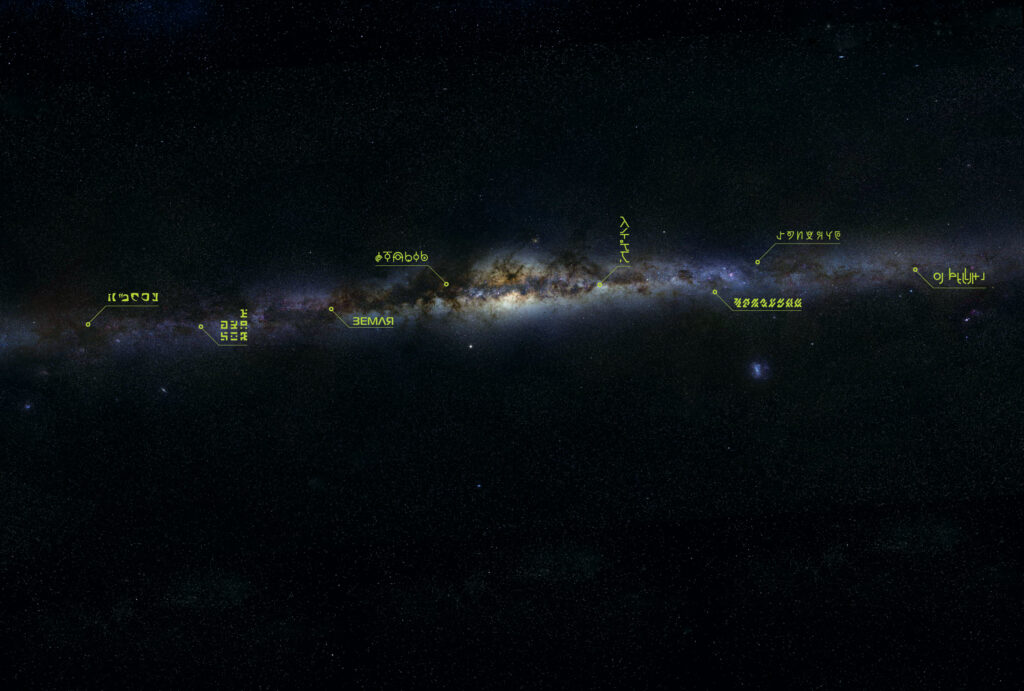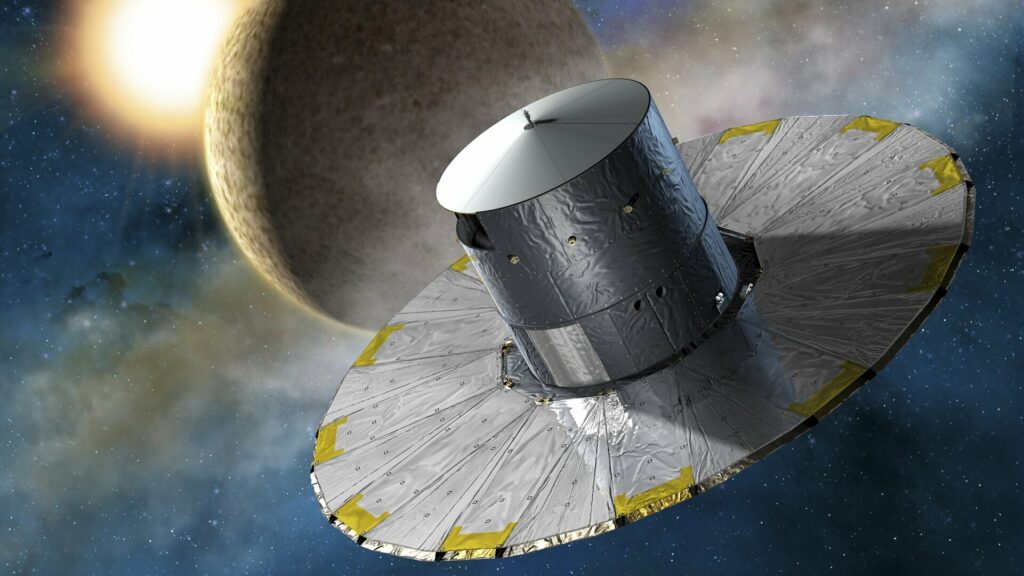In the history of mankind, there were two most famous Frank Drakes, who were engaged in the search for something new. One of them was a pirate who plundered Spanish galleons while discovering new lands and sea routes. The second focused on the search for “space brethren” outside the Earth. In parallel with the organization of “listening” for the celestial sphere in the radio range in order to register artificial signals, this American scientist tried to calculate how many more civilizations we can potentially meet within our Galaxy. His calculations have still not lost their relevance.
What is the Drake equation?
Drake’s famous formula looks like this:
N=R×fp×ne×fl×fi×fc×L
Here, R is the number of luminaries formed during a year within the Milky Way, fp is the share of sun-like stars with planets among them, ne is the average number of planets and their satellites in one system suitable for the emergence of intelligent life, fl is the probability of the origin of life on such a planet, fi is the probability that this life will “mature” to the level of intelligence, fc is the probability that an extraterrestrial civilization will have the technical ability to “communicate” and will want to do so, and L is the time during which this civilization will be in a “communicative” state. Accordingly, N is the number of contactable intelligent races that exist in the same time period as us.

Initially, all the data on the right side of the equation were known with little precision, and scientists simply assumed the values of some— each in his own way. In the middle of the last century, astronomers learned the rate of star formation in our Galaxy — it was believed that one Sun-like star appears every year. If we assume that half of such stars have planetary systems and each of them has two planets suitable for life, which is bound to occur, you can try to calculate what the other coefficients should be so that the result of the calculations is equal to unity (this corresponds to the only intelligent civilization within the Milky Way — ours). However, it was still necessary to assume that the duration of the “active existence” of mankind is 10 thousand years. In this case, the product of the factors fi and fc should be equal to one ten-thousandth. This can be understood as the fact that only 1% of life-orientated planets eventually have intelligent beings, and only 1% of these beings get access to interstellar communication and are willing to use it.
Now we know much more about our “stellar home”. After the discovery of numerous exoplanets, scientists were able to fairly accurately estimate how many of them there are per one star, and even determined that among them there are quite a lot of objects suitable for Earth-type life (according to some data, up to 10%, but this figure takes into account the possible rocky satellites of gas giants). Estimations also changed in the direction of increasing the probability of the appearance of intelligent beings and their achievement of the level of technologies that allow establishing contact at interstellar distances. Scientists also took into account the fact that since the beginning of the formation of our Galaxy, more and more luminaries of class G, to which the Sun belongs, and “neighboring” spectral classes F and K, were also formed in it, which are also very promising in the sense of searching for inhabited planets. All of them have a time of active existence of at least 4 billion years, which is exactly how long, according to modern ideas, is needed for the appearance of highly developed living organisms.
Next, the minimum and maximum possible parameter values were put into Drake’s formula. As a result, it turned out that under a pessimistic scenario, there are 8 civilizations living within the Milky Way at the same time as us, who could communicate with us. The most optimistic number is 2,900 civilizations. But the most realistic estimate states that we can hope to meet 36 “space brethren”. That is, together with us in the Galaxy, there are now 37 “communicable” intelligent races.
Possible reasons for the silence of the universe
So why haven’t we seen any signs of any of these races yet? Because these numbers are very scarce, actually.
Even if we admit the most optimistic estimate, according to which we can count on contact with 2,900 civilizations, with an even distribution across the Galaxy, the distance to the nearest one of should be 1,880 light years. A radio message sent to hit would be answered in 3760 years! Modern receiving equipment can theoretically register a signal from such a distance and distinguish it from “galactic white noise” (especially if we know exactly the direction from which it will come). But let us remind you that all this is providing that the best possible scenario is implemented. In the most plausible version, the average distance between “contact” civilizations exceeds 17 thousand light years. Here, problems arise not only with the registration of radio signals: from such a distance, our Sun would seem like an unremarkable faint star of the 18th magnitude, and its luminosity, let’s recall, is higher than that of most stars of the Milky Way.

The SETI project, which involves systematic scanning of the celestial sphere in search of artificial radio signals, has been implemented since 1984 (before that, irregular searches were carried out in separate areas of the sky). Since then, the instruments used in it have improved significantly, but still their sensitivity is not sufficient to confidently register a message from any of the 36 possible “galactic neighbors.” Probably, some of them have already gotten into the “field of view” of our radio telescopes, but … scientists simply could not detect its signals.
No matter how strange it sounds, the new calculations are rather pleasant news for the participants of this project. If earlier scientists believed that their fruitless efforts only indicated the absence of “contact objects”, now they have reason to believe that this is actually the result of the imperfection of existing tools and a not quite correctly chosen search strategy. Of course, the first of the mentioned obstacles is also related to limited funding, and this problem is difficult for astronomers to solve without outside help. As for the strategy, we now have a powerful “assistant” in the form of the European Gaia space telescope. Its main task is to carry out accurate measurements of the distances to a billion stars in the vicinity of the Sun, as well as to determine their physical characteristics. Therefore, it is proposed to single out sufficiently close sun-like luminaries (as well as close M-class red dwarfs) among the huge number of objects studied by it and try to purposefully search for signs of intelligent life in their vicinity.

Of course, no one abandons the previous technology of “continuous monitoring” — it can be implemented in parallel, especially since it has already brought several interesting results (Though, one of them — the BLC1 signal registered in 2019 — turned out to have a rather trivial explanation). But, as was rightly pointed out by the members of the research group engaged in the “reevaluation” of Drake’s formula, perhaps our most important task is to increase its last coefficient, that is, to maximize the continuation of the existence of technological civilization. To do this, we need to tackle a number of tasks that go far beyond astronomy: ensuring the sustainable development of humanity while simultaneously eliminating threats to the environment it creates, fighting the consequences of climate change, totalitarian regimes, epidemics, social and demographic challenges…
We obviously cannot help our “space brethren” solve all these problems. But to put things in order on our own planet is quite up to humanity. And then, after a few hundred or thousands of years, our descendants will definitely “have a chat” with representatives of some alien intelligent species — even if this dialogue lasts for millennia. Actually, this is one of the few goals for which our civilization should be preserved as long as possible.
